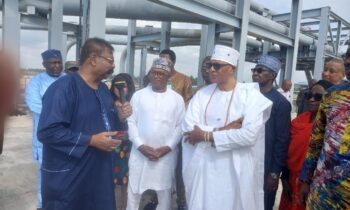Greenfield investments in Angola, as well as other leading and emerging hydrocarbon producing countries in Africa will help increase cumulative capital expenditure across the continent’s oil and gas sector in 2022 and beyond. According to the African Energy Chamber’s (AEC) Q1 2022 Outlook, The State of African Energy, which takes a deep dive into Angola’s current projects, investments and E&P activity, the country is well positioned to improve Africa’s overall production capacity, scaling up capital expenditure and exports.
The report states that while on one hand, E&P firms seek to reduce capital spending and operational expenditure resulting in declines in exploration and production investment in Africa, spending on new projects in leading hydrocarbon producers such as Angola will increase the overall cumulative capital expenditure between 2022 and 2025 in Africa. Accordingly, Africa will witness an increase in cumulative capital expenditure by up to $23 billion in 2022 mainly driven by investments in upstream activities in countries such as Angola, Mozambique and Uganda
Notable exploration and production projects in Angola contributing towards the continent’s capital expenditure include the ultra-deep water Agogo crude oil production project in Block 15/06 – which Italian multinational Eni will reach a Final Investment Decision (FID) for in 2023. At peak production in 2024, the project will produce approximately 42,000 barrels per day (bpd) of crude oil and condensate.
Eni has also made an investment at its Ndungu EP in the western area of Block 15/06, offshore Angola, which has enabled the major to kickstart production in late February 2022. With an estimated production rate of 20,000 bpd per day, the Ndungu project will be followed by an additional investment by Eni to boost its exploration in the Block in the second half of 2022.
Meanwhile, American multinational Chevron reached a FID in January 2021, to develop lean gas production infrastructure and transportation pipelines for the Sanha Lean Gas project which is located in Block 0 offshore Angola. The pipeline will transport over 480 million metric standard cubic feet of lean gas from Cabinda for processing by Angola LNG in Luanda to help meet demand locally, regionally and for exports from 2023. The ability of Angola to expand its crude oil exports in 2021, despite COVID-19 related market challenges that disrupted the global oil and gas market and supply chains, could provide investment opportunities for the country as regions such as Europe seek alternative suppliers in a bid to reduce reliance on Russian energy
Despite having 8.2 billion barrels of proven oil reserves and an estimated 13.5 trillion cubic feet (tcf) of natural gas reserves, Angola is witnessing a decline in oil production from 1.12 million bpd in 2021 to 1.1 million bpd in 2022. This decline is driving the Angolan government to implement a series of policy reforms that are aimed at increasing investment in exploration and production. Reforms include the introduction of a six-year licensing round in 2019 by the National Agency of Petroleum, Gas and Biofuels (ANPG). The Angolan government has also halved royalties and income tax for marginal discoveries such as those made by super majors Eni, TotalEnergies and ExxonMob





